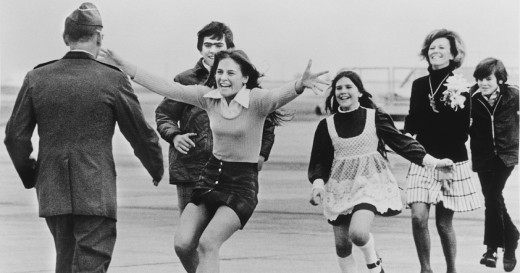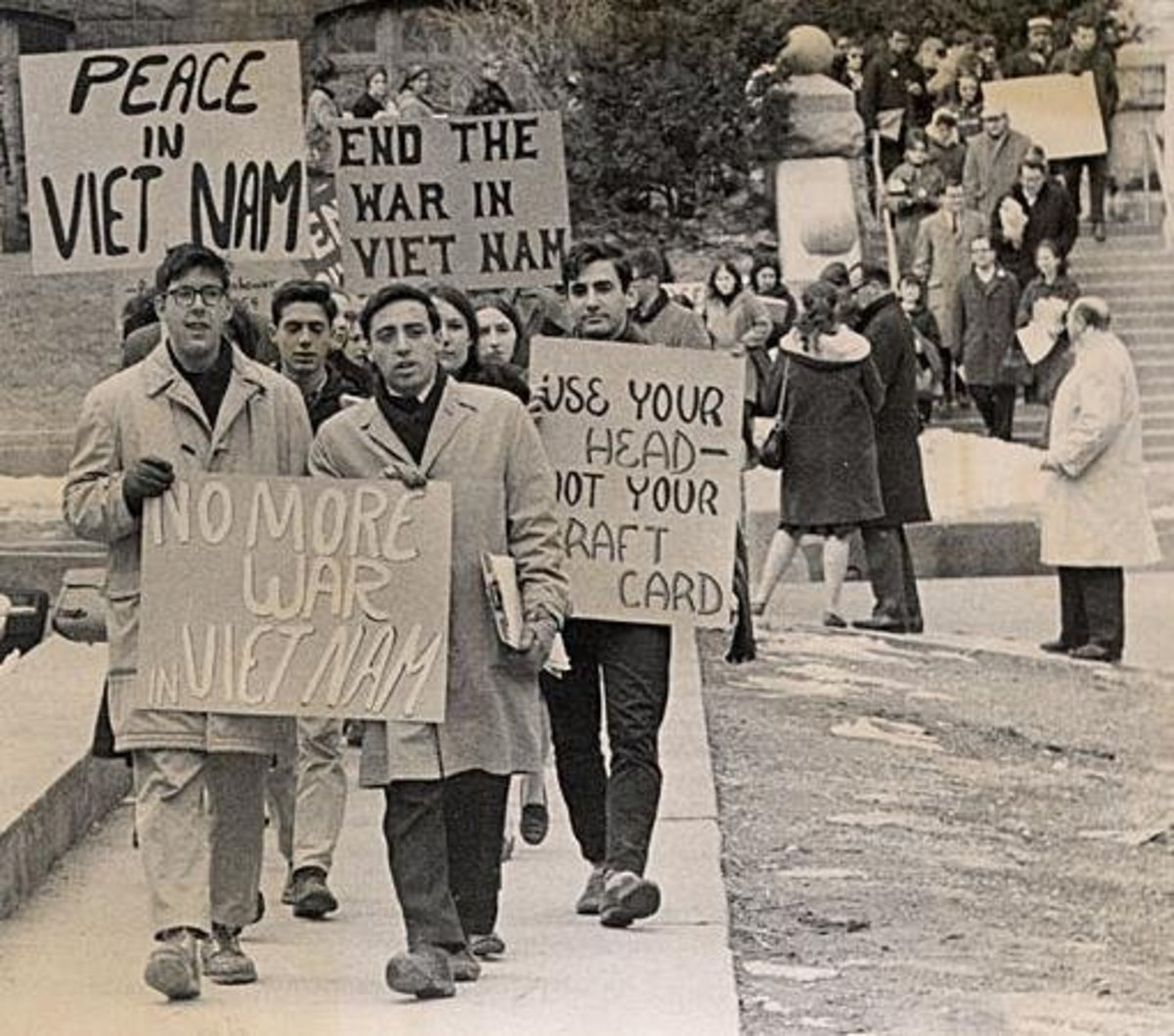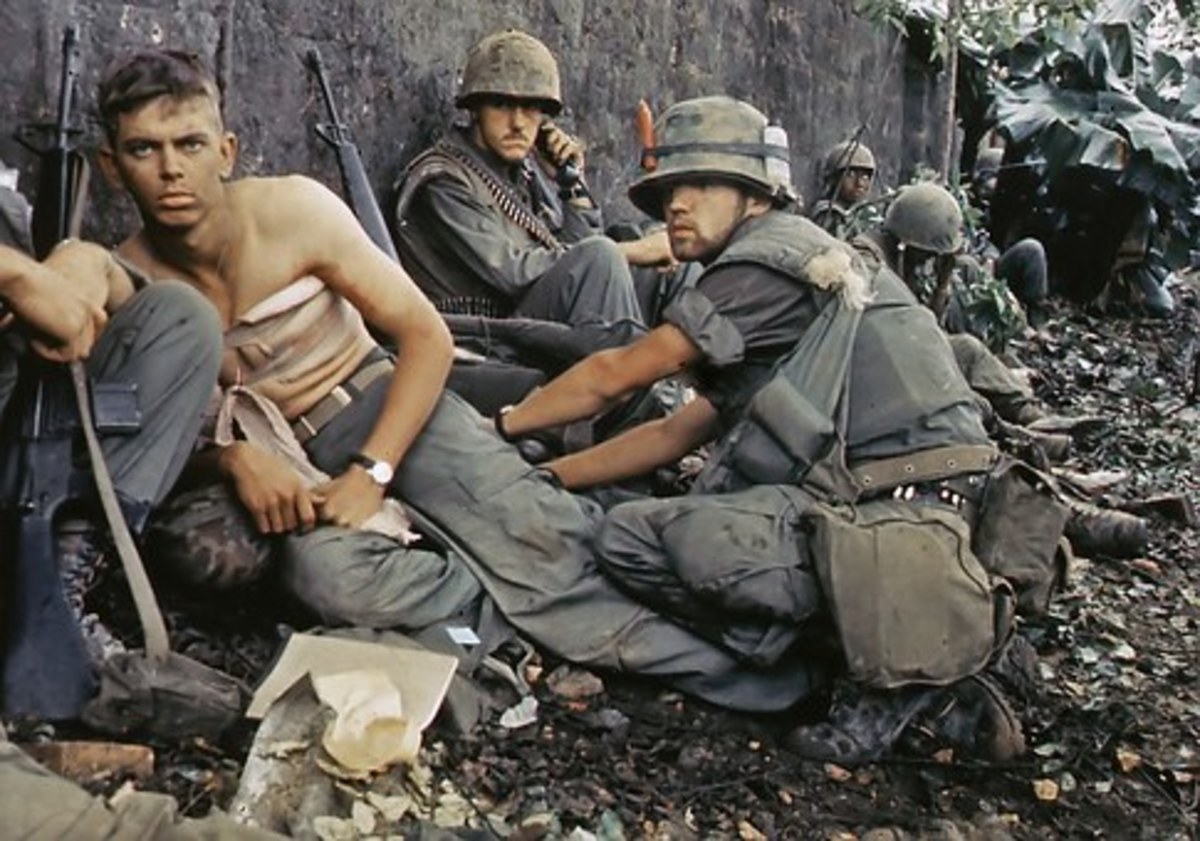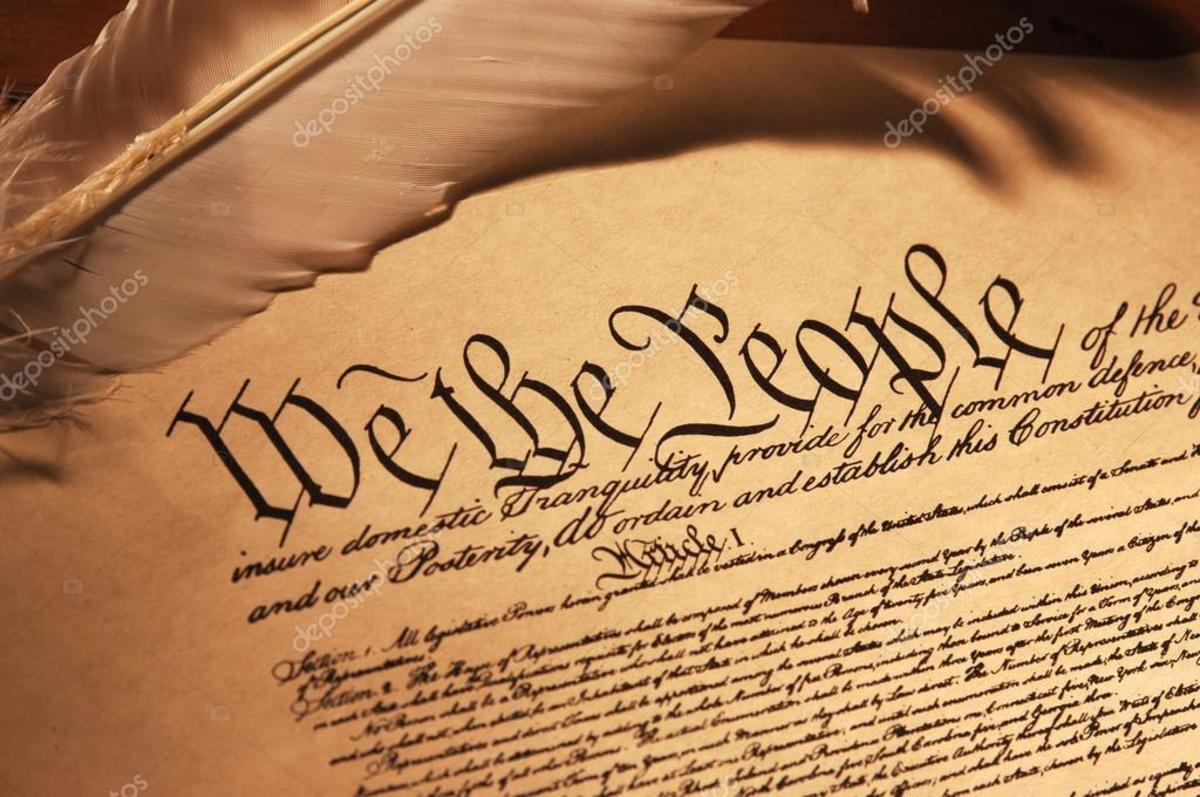Changing War Reporting During Vietnam
First wars
American war reporting goes back to the Revolutionary War, in the 18th century, with hand drawn and painted images. The words of those chronicling the war could be just as powerful as those today.The Civil War press was the first to photograph the horrors of an American war. However the production of these images could be costly, time consuming and not always readily available. In World War I, moving pictures were able to tell the stories, but the government completely banned any public images showing dead American soldiers. This restriction remained for the entirety of the war, which ended in 1918.
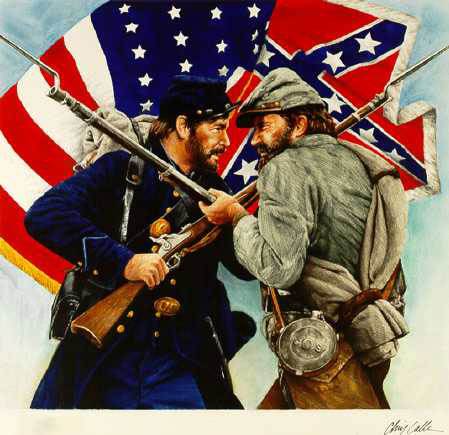
Initial Bans
The ban on morbid photographs continued into the first few years of World War II, which began for the U.S. in 1941. Newsreels (now with sound and color) of the actual war were sanitized and were used not only as information but as propaganda. The Office of War Information established guidelines that did not allow the press to publish images of dead American soldiers or those who were horribly wounded. Reporters followed these guidelines voluntarilly, although the O.W.I. still reviewed and censored the pieces.
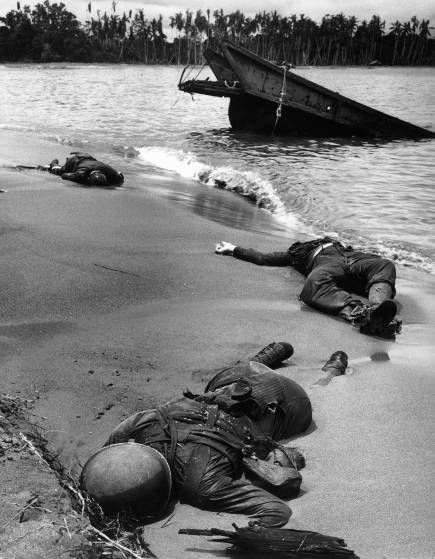
- http://time.com/3524493/the-photo-that-won-world-war-ii-dead-americans-at-buna-beach-1943/
The story behind the famous WWII photo of three dead American soldiers half-buried in the sand at a place called Buna Beach
W.W.II
But in 1943, opinion polls showed that the public, though still strongly supporting the war effort, was growing weary of the war itself. The O.W.I. in order to spur renewed interest and secure a stronger emotional connection in the war, allowed the press to publish pictures of the war dead for the first time since the Civil War. Life magazine soon presented pictures of three G.I.s killed on Buna Beach in the Phillipines, the first time dead American troops had appeared in an American publication during W.W.II.The war had become more visible, the country now allowed to see a bit of the actual results of lead meeting flesh, but no faces of the dead were allowed to be shown, and the severely wounded had to be shown attended by medical personnel. The nation was still shielded from the true vision of war.
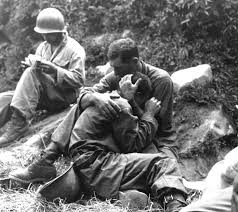
Korean War
The Korean War followed the rules of restriction and censorship of news coverage instituted for W.W. II. Though media technology had improved, it still took time for news-film to be developed, edited, and transported back to the United States. Competition between news sources remained strong, as each strived to be first in publication and exposure. Radio, newsreels, and print carried the war to the American public, but it was controlled and censored by the American government and military. But a new way of delivering the war was coming.
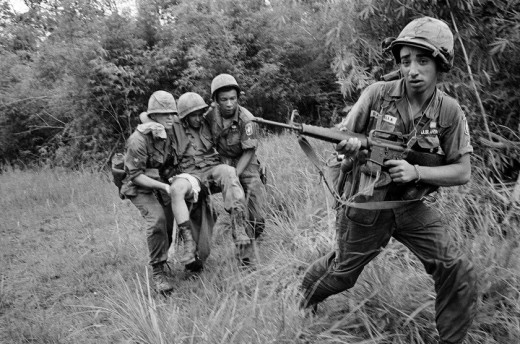
Television
Media coverage of the Vietnam War would be different from the Korean War and World War II, owing to the advancement of technologies, and the government's initial low key attitude toward American involvement in the southeast Asian country. Involvement began in the 1950's, but substantial military intervention would not happen until the 1960's. And although news services still relied on Japan as the center to develop and edit material from the war and then export it to the U.S., improvements in transportation made the process much quicker and more reliable. Technology improved processing and the audio and video equipment itself. Television, which was virtually non-existent in W.W. II and in less than 10% of American homes during the Korean War, now exploded into 93% of homes by the mid 1960's. Vietnam would become America's first "television war."
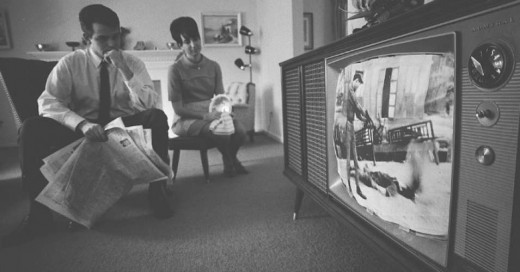
All Access
The U.S. Military Assistance Command, Vietnam (MACV), cordially made military transport available to news crews. In 2006 a reunited group of veteran Associated Press Vietnam War reporters said that early on their tour of the Vietnam War coverage, they were warmly welcomed by the American troops, and were respected by them for their courage in their coverage of the war. The journalists said that unlike the previous wars that many of them had covered, military officials and officers did not attempt to censor them, and in fact made every effort to accommodate them. They agreed that " it was unlike anything like has been since," or before. But this unrestricted access to military action and the lack of censorship made for a free press that decided what was to be presented. Eventually the military and government became dissatisfied with the tone of what was reported, published and broadcast, feeling that the media was presenting biased and unauthentic news. The press countered that they faithfully reported and presented what they observed.
- AP: Media Had Wide Access in Vietnam War
NEW YORK -- The news media's ability to cover the Vietnam War without censorship was unlike anything that has been seen since, correspondents who covered that conflict for The Associated Press said during a reunion.
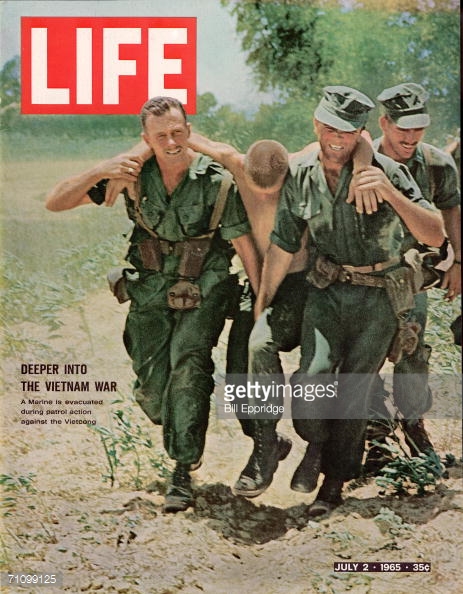
- Vietnam: The War That Killed Trust - The New York Times
The legacy of the war still shapes America, even if most of us are too young to remember it.
Seeing Differently
Initially the press had supported the military stories provided by the Joint U.S. Public Affairs Office at its daily briefings. But the press, having witnessed the events presented by Office, became jaded and would later refer to the briefings as the "5:00 Follies." What the press was seeing was not what the military was saying. Although there was still support by the press of administration policy, President Kennedy, and more so Johnson, felt this separation between the press's and military's visions. This area between interpretation and truth became known as "the credibility gap."
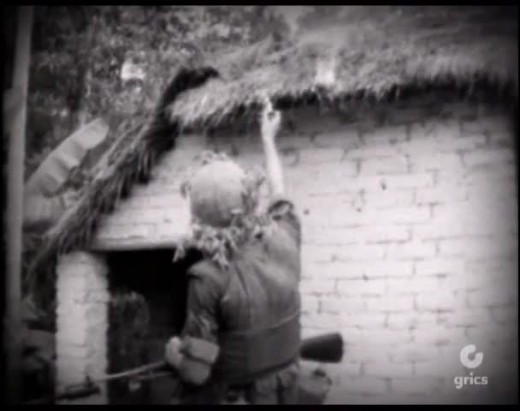
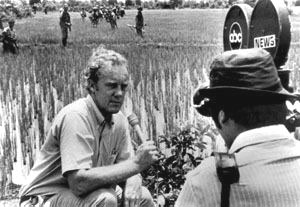
Two theories were presented by Angie Datim in "The Media and Vietnam" that she feels explain how the media in its split from the military's perception of the war, affected the outcome of the war. First - The Mirror Theory stated that the media did report the war news objectively, independently, and with balance. Second - The Elite Theory stated that policy makers like General Westmoreland, and Presidents Johnson and later Nixon,`said that the press, with its unrestricted access and no censorship, presented the facts in a negative way so as to push American disillusionment of the war effort.History shows that there is evidence to support both sides.
1968
The Pentagon Papers, presidential recordings, and released government documents, support much, but not all, the former. As for the latter, Ohio State University Professor John Mueller argued that support for the war " followed a pattern for decline that was remarkably similar" to W.W. II and Korean war. It seems that about three years is the threshold for war support. If the Vietnam War can be figured to have earnestly begun with the escalation of troops in 1965, then the three year peak would have come in 1968. This is often considered the watershed year for that war, the year that public support for the war was eclipsed by those who were against it, and withdrawal was the right choice.
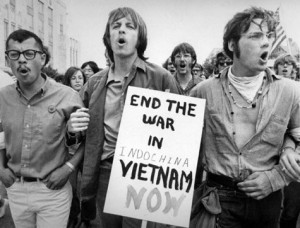
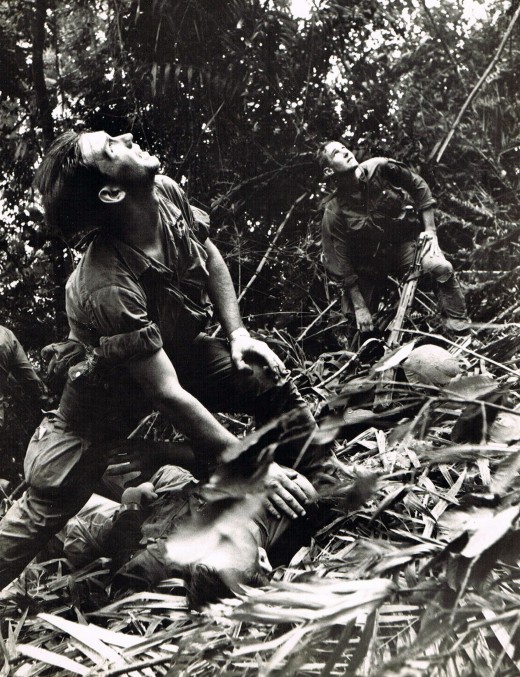
The Tet Offensive was a wave of attacks by the North Vietnamese and Viet Cong against the towns and cities of South Vietnam in January of 1968. The surprised U.S. and South Vietnamese forces were initially thrown back. Some cities and the American Embassy in Saigon were temporarily held by the invaders, but were eventually repelled. The North Vietnamese and Viet Cong suffered a great many casualties in their failure. It was a success for the U.S. and ARVN, but the press seemed to focus more on the temporary loss of the embassy rather than on strong overall victory. America's perception of the battle was that we were not the power in the war that the government wanted us to believe. Tet is thought by many to be the true beginning of the end of public support for the war. Further negative images of the war re-enforced the publics disillusionment.
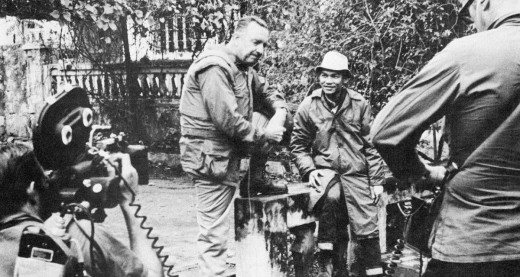
Images That Remain
In spring of 1968 "the most trusted man in America," CBS television news anchor Walter Cronkite, in a rare commentary on the war, stated that we were "mired in a stalemate" and the only path now to seek for America was that of an honorable peace. Protest marches and anti-war rallies received more news coverage than the war itself. Life magazine published pictures of all 242 American military personnel who had been killed in just one week. In 1969, the released pictures of the My Lai Massacre showed some of the roughly 300 civilians, women and children, slaughtered by a group of American soldiers.And later, the picture of 9 year old girl Phan Thi Kim Phuc running for life down a South Vietnamese road, naked, burned by napalm. These gruesome, images not only showed the horrors of the war, but unfortunately also gave the American public the image of the soldiers in a negative light. Erin McLaughlin in "The Media and the Vietnam War" said that these misleading pictures resulted in G.I.s and veterans as being seen as "baby killers" and "crazy Vietnam veterans."
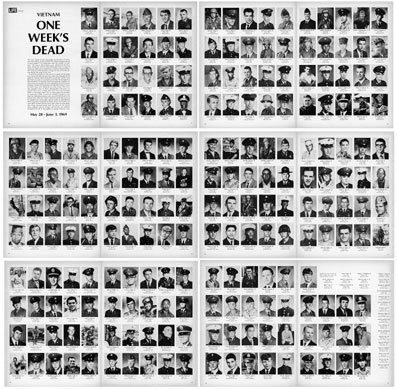
Change
After Vietnam the military did not want to repeat the mistakes of giving unlimited access and non-censorship to a media of which they were distrustful. Restrictions were placed on the media similar to those of W.W.II and the Korean war. Though reporters may be embedded, passages are controlled. The government is not as accomodating as it was early in the Vietnam War.That war changed the look of war and the way war is looked at.
